
In ancient times, when there were no proper roadways or transport facilities other than narrow footpaths through dense jungles. Infested with wild animals and for transport only bullock carts were available, the villagers very seldom opted to leave their villages for Pilgrimages or to visit their friends and relatives who stayed in other areas. With the greatest difficulties and one hundred and one risks, one journey, they dared to take was to go to Sri Pada once a year to worship. It is said that since this was a very dangerous journey, the villagers, were in the habit of transferring their belongings and properties to next of kin as they were doubtful of their safe return.
Since this journey takes several days, they had to spend the nights in some safe place and relax. The main purpose of building ambalams was to help these travellers rest their weary limbs, prepare meals, and spend the night. Very often these ambalams were erected near a stream. Also by the side of it, they placed a big pitcher of water called “pinthaaliya” moulded either in clay or stone.
The Sri Lankan-born art historian and philosopher Ananda K Coomaraswamy in an open letter to the Kandyan chiefs published in the Ceylon Observer on 17th February 1905, referring to ambalams says “Of the latter, I know but few really fine and ancient examples; of these, one is at Mangalama near Kegalle; this Ambalama was rebuilt so late as the middle of the last century from the materials of the earlier one, and is, even so, a very fine specimen of Kandyan architecture especially as regards the timbering of the roof and the beautiful gones or drooping lotus capitals, so different from careless modern copies that are sometimes seen, as for example in the new ambalama at Ratnapura, which is indeed built in a real Kandyan style, but much degraded in the details of its wood-work”.
In addition to using ambalams as resting places for weary travellers, they were used as centres to exchange news and to chew betel in leisure. Also, it was the place where village committees met. Robert Knox in his book on Ceylon says: “At their leisure when their affairs will permit, they commonly meet at places built for strangers and way-faring men to lodge in, in their language called Amblomb, where they sit chewing betel and looking one upon the other very gravely and solidly, discoursing concerning the affairs of court between the king and the great men; and what employment the people of the city are busied about. For as it is the chief of their business to serve the King, so the chief of their discourse is concerning such matters. Also, they talk of their own affairs, about cattle and husbandry. And when they meet with outlandish men they inquire about the laws and government of their country, and if it be like theirs; and what taxes and duties we are bound to pay, and perform to our king, &c” Thus we could see, the ambalams had played a very intimate and vital role in the lives of the villagers.
Davy in his book on Ceylon says that at Rambukwella, in Teldeniya, there was a small ambalama in close proximity to a beautiful temple custody of which was under four Buddhist monks.
In the Sinhalese encyclopedia (Volume 1, Page 696-1963 First Edition) ambalama is defined as a kind of hall erected by the side of the road for the benefit of wayfarers to relax on the way, as vehicles were rare in ancient times.
It was believed that to build these Ambalamas for the use of travellers was a meritorious deed and to pollute them is an unpardonable sin. On this belief, people of means did not hesitate to construct these resting places in suitable locations. They tried their best to keep- them spick and span.
In some of these ambalams, there had been planks erected as seats on different levels. It was said, especially when there were discussions on matters relating to the village with the elders and the chiefs of the village, that those who gathered there were expected to occupy the seats according to their age, status, and sometimes according to their castes as well.
Even in our Sandeesha poems (Messenger Poems) reference had been made to ambalams. For example, verse number 110 of Selalihini Sandeeshaya and verse number 166 of Gira Sandeeshaya request their ‘Messengers’ to enjoy the beautiful vista of the surroundings and to rest at the ambalama before proceeding.
Due to carelessness, ignorance, or lack of patriotism most of these Ambalams are no more and what is left is in a dilapidated condition that needs early attention for the benefit of our descendants.
In addition to the famous ambalama at Kadugannawa which was recently renovated by the archaeological department at a cost of Rs. 300,000.00, some of the ambalams in the central province are at Siridigana, close proximity to Teldeniya-Rangala road, at Teldeniya close to the police station by the side of Kandy-Mahiyangana road, at Kengalle on the Kandy-Digana road via Kundasale, at Makuldeniya close to the Sub Post Office, Makuldeniya, on Teldeniya-Rangala road and at Dunhinna on Teldeniya-Werapitiya road close to Dunhinna Rural Hospital. On the Old Victoria road about 1 1/2 km. from Digana Junction there are remnants of a Gal Ambalama. It is revealed that most of the stone pillars and slabs have been removed by unscrupulous people to construct houses or to beautify their gardens.
Other than the above, there are several ambalams and remnants of ambalams strewn in most parts of the country. Just a few of them are at Daulugala and Embekke in Kandy district, Panavitiya on the Dambadeniya-Anuradhapura road, Walawala – along Beliatte-Hakmana road, Werahera, Pita Kotte and on the Bellanwila road.
Before long, since there’s a possibility of these buildings of archaeological value to disappear, for the sake of posterity it’s the bounden duty of those in authority to take immediate precautionary measures to protect and maintain these Ambalams – our architectural heritage.
Ancient Ambalam of Sri Lanka
| No | Name | Location | Province | District | Notes |
| 001 | 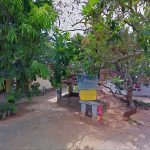 Vijayapura Ambalama Vijayapura Ambalama | yes | Eastern | Ampara | The Vijayapura Amblama is a square structure with short walls. These walls serve as benches as well. Two openings in the front and rear serve as entrances. Four pillars on the corners support the roof. The complete structure is built of brick and mortar and lacks any artistic value. This ambalama primarily serves as a gathering place for the villagers. |
| 002 | 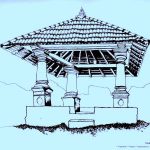 Alapatwewa Ambalama Alapatwewa Ambalama | no | North Central | Anuradhapura | Archeologists mapping the ancient road network from Anuradhapura found remains of ambalamas at Vijayarama and Alapatwewa. At Alapatwewa the ambalama was placed at a junction where several roads met. It was about 48 feet long, rectangular and constructed on a natural bed rock. |
| 003 | 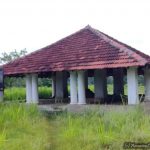 Maha Elagamuwa Ambalama Maha Elagamuwa Ambalama | yes | North Central | Anuradhapura | A bana maduwa built in 18th century has been relocated to this location in 1904 and currently being used as a ambalama. The pillars have been built with brick and plaster but the wooden beams on the roof have been reused and still the ancient carvings can be seen on these. |
| 004 | 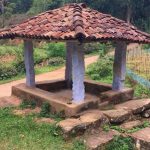 Ambagasdowa Thotupala Arawa Ambalama Ambagasdowa Thotupala Arawa Ambalama | yes | Uva | Badulla | A 300 year old open square ambalama made with four stone pillars hidden in the village of Thotupola Arawa |
| 005 | 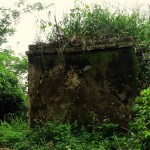 Ambalanpotha Ambalama Ambalanpotha Ambalama | yes | Uva | Badulla | Built in a elephant infested forest long time ago, this Ambalama is built on a 8 foot high brick platform to protect the vary travelers from elephant attacks in the night. |
| 006 | 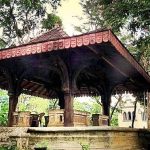 Badulla Kachcheriya Ambalama Badulla Kachcheriya Ambalama | yes | Uva | Badulla | Lies inside the Kachcheri land in the middle of the Badulla town. The ambalama has been built during early 19th century with finely carved wooden pillars, arches and pillar tops. |
| 007 | 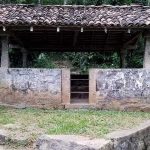 Bambarapana Medipokuna Bandara Kandura Ambalama Bambarapana Medipokuna Bandara Kandura Ambalama | yes | Uva | Badulla | There are 2 short stone pillars at the entrance to the Ambalama. One pillar is inscribed with the date and the donor of the Ambalama. Accordingly, it has been constructed in Buddhist Era 2464 (1920 CE). The rest of the inscription is not clear. |
| 008 | 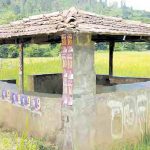 Dehikindayaya Ambalama Dehikindayaya Ambalama | approx. location | Uva | Badulla | An ambalama going back to the time of king Walagamba. However this has been re constructed many times. The current brick stucture is in a dilapidated state. |
| 009 | 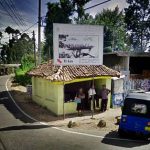 Ettampitiya Ambalama Ettampitiya Ambalama | yes | Uva | Badulla | Stands on Welimada- Badulla road on the junction at the turn off to the Ketawala road. This is a small brick and mortar building tiled with sinhala ulu. |
| 010 | 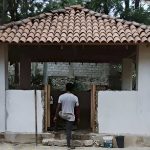 Haldummulla Ambalama Haldummulla Ambalama | yes | Uva | Badulla | This building was built in the form of a Ambalama with the unique features of Ambalama (way side rests) since the ancient kings. Subsequently the village courts were transferred to Bandarawela and this building was used as a Ambalama by the wairy travellers passing this area. |
| 011 | 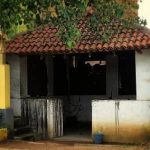 Kahaththewela Ambalama Kahaththewela Ambalama | yes | Uva | Badulla | Lies in Bandarawela. In 2013, this ambalama was completely reconstructed and what is seen today is this re constructed building. How much of its original design and architecture had been preserved is not known. |
| 012 | 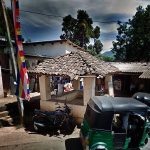 Ketawala Ambalama Ketawala Ambalama | yes | Uva | Badulla | a small brick and mortar structure with no special decoration built on the ancient route to Kandyan kingdom to Muthiyangana Viharaya in Badulla |
| 013 | 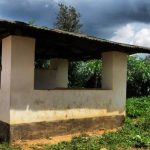 Kirioruwa Ambalama Kirioruwa Ambalama | approx. location | Uva | Badulla | A small brick and mortar hidden away from popular road network between Bandarawela and Attempitiya. |
| 014 | 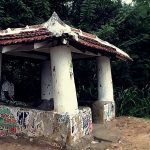 Kolongahamaditta Ambalama Kolongahamaditta Ambalama | approx. location | Uva | Badulla | The ambalama is a brick and mortar square structure with four huge cylindrical pillars rising from the half height walls. The half walls of the ambalama served as a benches for the travelers. |
| 015 | 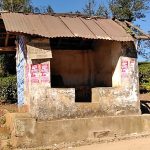 Moragolla Ambalama Moragolla Ambalama | yes | Uva | Badulla | A small ambalama in the middle of Downside estate just 2.5 km off Welimada town. Made of brick and mortar this ambalama has been recently renovated and the clay tiles have been replaced by galvanized roofing sheets. |
| 016 |  Potawa Ambalama (Ridimaliyedda) Potawa Ambalama (Ridimaliyedda) | yes | Uva | Badulla | Potawa Ambalama is a small Ambalama on the Mahiyanganaya - Bibila road in Ridimaliyadda. It lies in the middle of a paddy field at the 15 km post of the B057 (Bibile - Uraniya - Mahiyangana) road. It is built with brick and mortar and six brick pillars hold the roof. The roof is tiled with Calicut clay tiles. |
| 017 |  Ridimaliyadda Ambalama Ridimaliyadda Ambalama | yes | Uva | Badulla | Mahiyanganaya is 25 kilometres away from the Ambalama, while Bibile town is 15 kilometers away. From Mahiyanganaya, use the Badulla route for 13 kilometres before turning into the Bibile road. |
| 018 |  Wattekele Ambalama Wattekele Ambalama | approx. location | Uva | Badulla | Protected as a designated archaeological monument in 2013. No other information available |
| 019 | 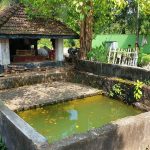 Athurugiriya Ambalama Athurugiriya Ambalama | yes | Western | Colombo | This Ambalama is a comparatively large brick and mortar structure with a large verandah on 2 sides lying close to a paddy field. |
| 020 |  Bellanwila Ambalama Bellanwila Ambalama | yes | Western | Colombo | Does not exisit. Only the name remains as Ambalama Junction |
| 021 | 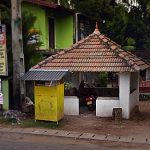 Gelanigama Ambalama Gelanigama Ambalama | yes | Western | Colombo | Lie close to the Southern Expressway entrance at Gelanigama on the Panadura - Horana road. |
| 022 |  Moratuwa Ambalama Moratuwa Ambalama | No | Western | Colombo | The Ambalama is no more. It was constructed by the philanthropist Jeronis de Soysa, father of Charles Henry De Soysa, some years prior to 1853 in Kurunduwatta, Moratuwa. |
| 023 | 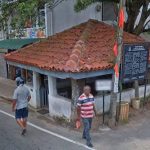 Pitakotte Gal Ambalama Pitakotte Gal Ambalama | yes | Western | Colombo | Lying at the Pitakotte junction this ancient ambalama is over looked by many and has become home to street vendors. |
| 024 | 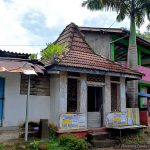 Baddegama Ambalama Baddegama Ambalama | yes | Southern | Galle | An ambalama built in 1911 to commemorate the coronation of King George V on 22 June 1911 by a local. The commemoration plaque carved in to a stone pillar still can be seen at the site. |
| 025 | 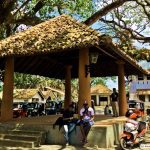 Galle Fort Ambalama Galle Fort Ambalama | yes | Southern | Galle | Lies at the far end of the fort in the open space known as the Courthouse Square. This is a simple brick and mortar structure with with four cylindrical pillars. |
| 026 | 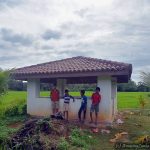 Habaraduwa Meepe Ambalama Habaraduwa Meepe Ambalama | yes | Southern | Galle | A 200 year old Ambalama constructed in the middle of a picturesque paddy field. The dilapidated ambalama has been restored and conserved in 2016 by the department of archaeology. |
| 027 | 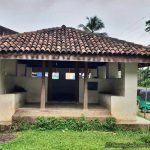 Thawalama Batahena Ambalama Thawalama Batahena Ambalama | yes | Southern | Galle | Am ambalama built in 1915 near Gin Ganga to help the goods carrying bullock cart owners as well as the boatmen to rest safety during the night. Has been restored in 2019. |
| 028 | 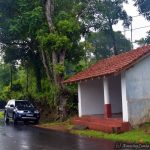 Weniyarawela Ambalama Weniyarawela Ambalama | yes | Southern | Galle | Ancient Ambalama which has been rebuilt in 1967 in a different shape. The associated well has been filled with earth around 2019 and cannot be seen anymore. |
| 029 | 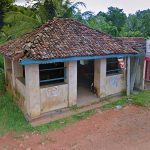 Yakkalamulla Polpagoda Ambalama Yakkalamulla Polpagoda Ambalama | yes | Southern | Galle | The Yakkalamulla Polpagoda Ambalama is made of brick and mortar with a half wall traversing around the building. Nine brick walls supports the roof the building. The roof is tiled using Gam-Ulu, Semi Cylindrical Clay Tiles. |
| 030 | 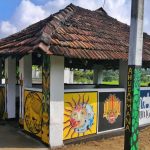 Ahugammana Ambalama Ahugammana Ambalama | yes | Western | Gampaha | A large ambalama made of brick and mortar in Ahugammana village in Gampaha District. Recently outer wall has been painted with drawings. |
| 031 | 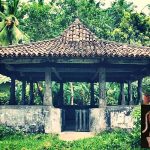 Ambagaspitiya Ambalama Ambagaspitiya Ambalama | yes | Western | Gampaha | A 18th century wayside rest built on granite pillars situated on the Yakkala-Radawana road, 4.7 km from Yakkala. The ambalama is built with 12 granite pillars with a design similar to the Gallindawatta Ambalama few kilometers away. |
| 032 | 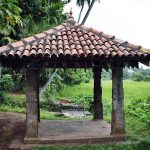 Ambagaspitiya Gallindawatta Ambalama Ambagaspitiya Gallindawatta Ambalama | yes | Western | Gampaha | The ambalama is built on a small square granite platform. The roof is held by four granite pillars with alternating 4 sided and 8 sided shape, |
| 033 | 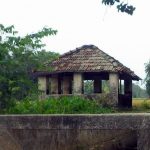 Amunugoda Ambalama Amunugoda Ambalama | yes | Western | Gampaha | This Ambalama is a brick and mortar structure with seven brick pillars holding the roof lying by a paddy field. |
| 034 | 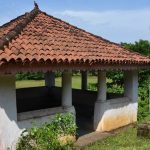 Apalawatta Ambalama (Yatawaka Ambalama) Apalawatta Ambalama (Yatawaka Ambalama) | yes | Western | Gampaha | Nine brick pillars hold the roof of the building and a half height wall is built around the building. Out of the nine pillars, four pillars at the corners are square and the others are cylindrical. All the pillars are plain and carries no artwork. |
| 035 | 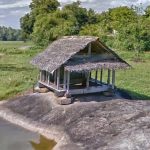 Awariyawala Ambalama Awariyawala Ambalama | yes | Western | Gampaha | believed to be built by king Wattagamini Abaya aka king Walagamba (89-77 BC). The ambalama lies in a picturesque landscape on a flat rock adjoining a small pond. |
| 036 | 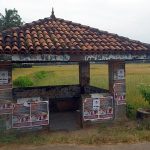 Balabowa Ambalama Balabowa Ambalama | yes | Western | Gampaha | This Ambalama is a brick and mortar structure with four brick pillars holding the roof lying in the middle of a paddy field. |
| 037 | 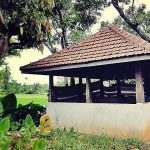 Bogahawaththa Ambalama Bogahawaththa Ambalama | yes | Western | Gampaha | lying close the the Kirindiwela police station, the ambalama is rectangular in shape and built on 10 granite pillars. |
| 038 | 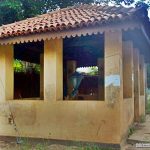 Bollatha Ambalama Bollatha Ambalama | yes | Western | Gampaha | Lies at the 5th mile post on Kandana – Ganemulla Road. The Ambalama has been restored recently with brick and cement. It is quite small and has a single entrance from the Walpola Road. |
| 039 | 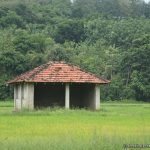 Bothale Welameda Ambalama Bothale Welameda Ambalama | yes | Western | Gampaha | The history of the Bothale village goes back to times of King Gothabaya (253-266 AD) of Anuradhapura kingdom. Lies in the middle of a paddy field. |
| 040 | 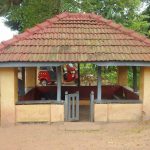 Bulugahagoda Ambalama Bulugahagoda Ambalama | yes | Western | Gampaha | This Ambalama is a brick and mortar structure with four brick pillars hold the roof of the building supported by five wooden pillars believed to be built about 100 years ago. |
| 041 | 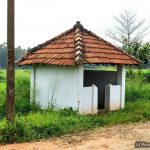 Daranagama Ambalama Daranagama Ambalama | yes | Western | Gampaha | A square ambalama made of cement adjoing a paddy field in Daranagama area. No historical records are available. This has been recently restored and renovated. |
| 042 | 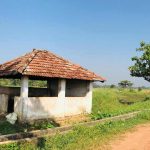 Horagolla Ambalama Horagolla Ambalama | yes | Western | Gampaha | Horagolla Ambalama is a brick and mortar structure with six brick pillars holding the roof. The rear of the ambalama is a full height while the other 3 sides have half-height walls. The pillars are plain and carry no artwork. A half height wall is built around the building with an opening for the entrance at the front. The roof is tiled with semi cylindrical Sinhala Ulu clay tiles. |
| 043 | 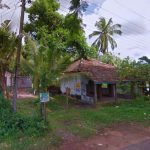 Kehelella Ambalama Kehelella Ambalama | yes | Western | Gampaha | This Ambalama at Kehelella is made of brick and mortar. Although this design is not unique in artistic quality, it is unique as an Ambalama, a part of the extended ancient ambalama network across the country and a record of ancient hospitality extended to unknown visitors traveling through the village. |
| 044 | 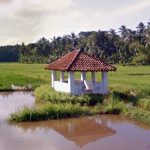 Kossinna Ambalama Kossinna Ambalama | yes | Western | Gampaha | This Ambalama is a brick and mortar structure with seven brick pillars holding the roof lying in the middle of a paddy field. |
| 045 | 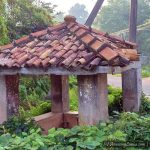 Kottunna Ambalama Kottunna Ambalama | yes | Western | Gampaha | Lies in on the Biyagama - Kottunna road in Kaduwela. A square ambalama made in the recent past using brick and mortar. Has no artistic value. However the roof has been built using the typical Kandyan era ambalam architecture using a Madol Kurupawa and connecting all the wooden beeams to a central wooden nail. |
| 046 | 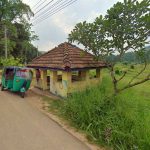 Kuttivila Ambalama Kuttivila Ambalama | yes | Western | Gampaha | Gampaha Kuttivila Ambalama stands out as a significant resting spot, situated alongside a green paddy field and the Kirindiwela-Batuwita road in Gampaha. Crafted from durable brick and mortar, this Ambalama presents itself as a sturdy rectangular structure. Positioned with its entrance facing the main road, it is embraced by a half-height protective wall. |
| 047 | 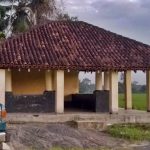 Mattagoda Galekade Ambalama Mattagoda Galekade Ambalama | yes | Western | Gampaha | This Ambalama is a comparatively large brick and mortar structure with a large verandah on 2 sides lying close to a paddy field. |
| 048 | 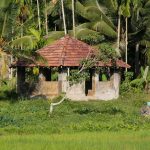 Narangaspitiya Ambalama Narangaspitiya Ambalama | yes | Western | Gampaha | Narangaspitiya Ambalama is a notable resting place nestled adjacent to a lush paddy field in Gampaha. Constructed from sturdy brick and mortar, this Ambalama stands as a substantial square structure. Positioned with its entrance oriented towards the serene expanse of the paddy fields, it is encircled by a protective half-height wall. |
| 049 | 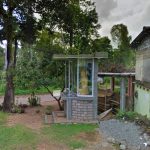 Putupagala Ambalama Putupagala Ambalama | yes | Western | Gampaha | The ambalama lies in the village of Putupagala in the Gampaha District. This ambalama is believed to be built by king Weeraparakrama (1477 – 1489) of Kotte kingdom.However this has been demolished and some stones have been used to build a small shrine at the same location. |
| 050 | 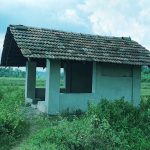 Thibbotugoda Ambalama Thibbotugoda Ambalama | yes | Western | Gampaha | Thibbotugoda Ambalama is a brick and mortar structure with six brick pillars holding the roof. Half of the Ambalama has full hight walls to protect the occupants from rain. The pillars are plain and carry no artwork. The roof is tiled with Calicut tiles. |
| 051 | 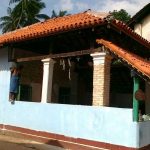 Udammita Ambalama - Veyangoda Udammita Ambalama - Veyangoda | yes | Western | Gampaha | This is an ancient brick and mortar wayside rest built in 1829 on the Nittambuwa – Veyangoda road. This ambalama is a comparatively large building, size of a small house with 2 rooms. |
| 052 |  Wathumulla Ketawala Ambalam Wathumulla Ketawala Ambalam | yes | Western | Gampaha | The Ketawala Ambalama in Wathumulla is an ancient wayside rest now lying in surrounded by paddy fields. The ambalama lies close to the Daraluwa Railway Station. |
| 053 | 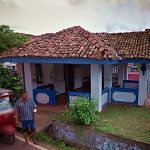 Wegowwa Ambalama - Minuwangoda Wegowwa Ambalama - Minuwangoda | yes | Western | Gampaha | Lacking the typical architectural features of ambalama buildings of Kandyan era, this is a brick and mortar house with a single room and a half height wall going around the building. |
| 054 | 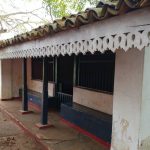 Walawela Ambalama Walawela Ambalama | yes | Southern | Hambantota | Ancient wayside rest made in 1895. A unique stone water tank which is decorated with elaborated carvings on the sides can be found at the site. |
| 055 | 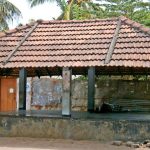 Aru Kaal Madam (Ambalama) Aru Kaal Madam (Ambalama) | yes | Northern | Jaffna | This Six Pillar Choultry is built on a 70cm high platform with six pillars holding the roof and open from all sides. The other components of this building lies left to this structure. |
| 056 | 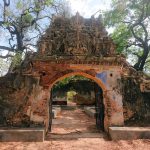 Keeramale Sirappar Madam (Ambalama) Keeramale Sirappar Madam (Ambalama) | yes | Northern | Jaffna | Considered the largest if not one the largest Ambalama in Sri Lanka, Sirappar Madam (ambalama) would have been built for pilgrims to Nakuleswaram Kovil in the ancient past. |
| 057 | 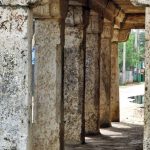 Point Pedro Theru Moodi Madam (Ambalama) Point Pedro Theru Moodi Madam (Ambalama) | yes | Northern | Jaffna | The Ambalama structure at Theru Moodi Madam is another little gem in Jaffna which very few even knows of its existence. Ambalam (madam) in Jaffna Peninsula is generally different to the such structures in other areas. |
| 058 | 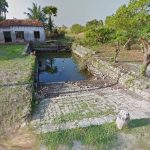 Santhaiyaar Madam (Ambalama) Santhaiyaar Madam (Ambalama) | yes | Northern | Jaffna | The most significant item at this site is the ancient pond which is built with the coral stone. The pond is about 12 meters long and slants towards the bottom of the tank from the side of the road. Steps has been built for easy access to the water when the water levels are low. |
| 059 | 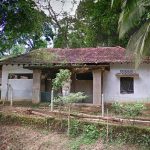 Kirigala Ambalama Kirigala Ambalama | yes | Western | Kalutara | A brick and mortar wayside rest but built similar to a small house lying on the Meepe – Ingiriya Road inside the Sagara Palansuriya Maha Vidyalaya premises. |
| 060 | 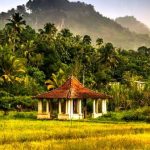 Ambagasthanne Kurukuttala Ambalama Ambagasthanne Kurukuttala Ambalama | yes | Central | Kandy | Kurukuttala Ambalama is an ancient wayside rest now lying in surrounded by paddy fields on the road to Ambagasthanne from Illukwatte close to Kadugannawa. This is also known by the names of Aladuwaka Ambalama and Rammatha Ambalama. |
| 061 | 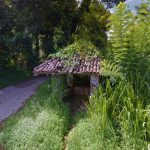 Amunugama Ambalama Amunugama Ambalama | yes | Central | Kandy | Over 100 years old now dilapidated small ambalama made of brick and mortar lies deserted at a edge of a paddy field. |
| 062 | 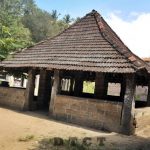 Appallagoda Ambalama Appallagoda Ambalama | yes | Central | Kandy | Built in 1922 this ambalama has a floor area of approximately 80 square meters and it measures 5.6 meters from floor to pinnacle. The roof is supported by two sets of stone columns, 12 externally and 4 internally. |
| 063 | 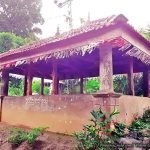 Aththaragama Ambalama Aththaragama Ambalama | yes | Central | Kandy | Ancient Ambalama on the Katugastota - Medawala road. Still maintains in its original design and the stone cut panthaliya (water container). Wooden pillars contains simple simple designs such as flowers, elephants and floral designs. The pekada's (pillar heads) too are caved in a simple spiral design. |
| 064 | 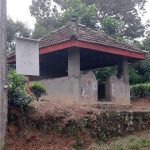 Bowala Ratu Ambalama Bowala Ratu Ambalama | yes | Central | Kandy | This Ambalama has been built and completed on 9th July 1937 in memory of Uduwaralle H. M. Kiribanda Loku Nilame who died in 1937. The Building is a square structure built using brick and mortar with 2 pillars in front. The rear is wall with curved top creating space for ventilation. |
| 065 | 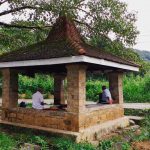 Daskara Galkona Ambalama Daskara Galkona Ambalama | yes | Central | Kandy | Recently restored beautiful Ambalama with typical old Kandyan architecture. Made of stone blocks and a majestic roof structure. |
| 066 | 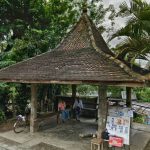 Daulagala Ambalama Daulagala Ambalama | yes | Central | Kandy | Tha Ambalama lies on the junction where Watadeniya road meets Peradeniya – Gadoladeniya Road (B116) at Daulagala Town. |
| 067 | 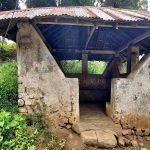 Dehalkada Ambalama Dehalkada Ambalama | yes | Central | Kandy | A large ambalama made of kabook and mortar in the Dehalkada junction in Marassana. The design of this ambalama is unique with the walls gradually angling upwards towards the four corners. In addition 3 more towers rising from 3 sides of the wall hold the roof. The roof is covered with of galvanized roofing sheets. |
| 068 |  Digana Gal Ambalama Digana Gal Ambalama | yes | Central | Kandy | Lie on the Old Victoria road about 1 1/2 km. from Digana Junction there are remnants of a Gal Ambalama. It is revealed that most of the stone pillars and slabs have been removed by unscrupulous people to construct houses or to beautify their gardens. |
| 069 | 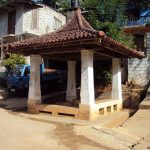 Dodanwala Ambalama Dodanwala Ambalama | yes | Central | Kandy | An ambalama built 1875 with brick and mortar with typical Kandyan architecture hidden away on a by-lane among houses. |
| 070 |  Dunhinna Ambalama Dunhinna Ambalama | approx. location | Central | Kandy | Lie on the Teldeniya-Werapitiya road close to Dunhinna Rural Hospital. No further information available. (source : http://www.island.lk/2009/10/18/leisure1.html). |
| 071 |  Dunuwila Ambalama Dunuwila Ambalama | no | Central | Kandy | Dunuwila Ambalama in Walagedaragama village situated in the Grama Niladhari Division, Sandasiridunuwila in the Divisional Secretary's Division, Medadumabara in Kandy District in Central Province was declared as an protected archaeological site on 30 Sep 2022. |
| 072 | 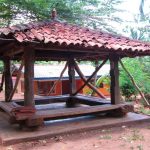 Elikewala Ambalama Elikewala Ambalama | approx. location | Central | Kandy | A small wooden ambalama built to the Kandyan tradition with caved wooden pillars. However the designs are not clear due to aging. |
| 073 | 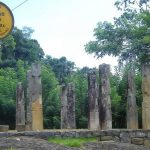 Embekke Ambalama Embekke Ambalama | yes | Central | Kandy | Lies on the route to Embekke Devalaya. It is generally accepted that this Ambalama is much older than the Embekke Devalaya and was probably built by king Buvanekabahu IV (1341-1351) of Gampola kingdom. |
| 074 | 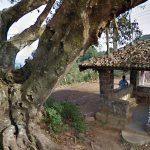 Getakulawa Ambalama at Rikillagaskada Getakulawa Ambalama at Rikillagaskada | yes | Central | Kandy | Lies at the Getakulama junction. The building is square in its plan and four large pillars hold the roof of the building. The pillars are built using granite blocks held together by cement. |
| 075 | 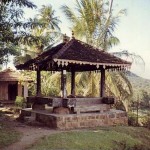 Godamunne Ambalama Godamunne Ambalama | yes | Central | Kandy | It is said that the wooden pillars of the Hanguranketa palace destroyed by fire by the Dutch in the 17th century were used for the construction of this wayside resting house. |
| 076 | 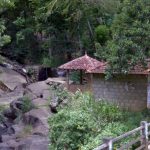 Godamunne Gal Ambalama Godamunne Gal Ambalama | yes | Central | Kandy | little known Ambalama in Godamunne hidden by the butiques near the Godamunna Ella. |
| 077 | 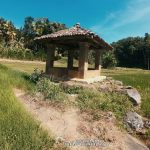 Guralawela Ambalama Guralawela Ambalama | yes | Central | Kandy | he Ambalama at Guralawela is situated amidst a scenic paddy field. In close proximity, at a distance of 50 meters, there lies an ancient Uraketa well. These wells are characterized by a sturdy outer casing made from the trunk of a sizable tree such as Kumbuk, Milla, or Jackfruit. This casing serves the purpose of preventing sand from entering the well. |
| 078 |  Halloluwa Pallegama Ambalama Halloluwa Pallegama Ambalama | yes | Central | Kandy | Pallegama is located in the Harispattuwa Divisional Secretariat. Pallegama Ambalama is located adjacent to the Pallegama Thalawa paddy fields. This fertile field of more than 60 acres has been cultivated for two seasons since the time of the ancient kings but today these fields have become barren due to lack of water. |
| 079 | 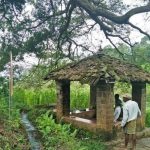 Hanguranketha Udalumada Ambalama Hanguranketha Udalumada Ambalama | approx. location | Central | Kandy | This small Ambalama which belongs to the Kandyan period is located in Udalumada village in Hanguranketha. The ambalama is square in shape and is built near a stream of cool water stream under a large shade. The roof rests on four pillars made of blocks of granite. The short wall around the four sides have been designed to be seated. |
| 080 | 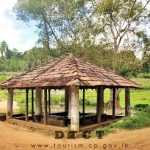 Hewawissa Ambalama Hewawissa Ambalama | yes | Central | Kandy | The building is built upon 8 cylindrical pillars with a shape typical on most brick and mortar Ambalams of this era. Four pillars marks the outside corners of the building. Eight more wooden pillars between the brick and mortar pillars provides additional support. |
| 081 | 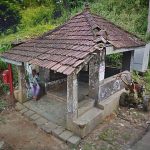 Ilukthenna Ambalama Ilukthenna Ambalama | yes | Central | Kandy | lie on the route to famous Suriyagoda Rajamaha Viharaya about 8 km from Kandy city. Unfortunately the Ambalama seems to have been renovated without much consideration to its antiquity some time ago. |
| 082 | 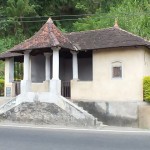 Kadugannawa Ambalama Kadugannawa Ambalama | yes | Central | Kandy | One of the most known and seen ambalama in the country. Said to have built during the reign of King Sri Wickremerajasinghe and must have been a popular stopover for the merchants traveling on the arduous route between ancient hill capital and the lowlands. |
| 083 | 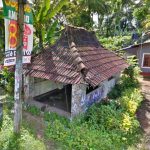 Kaiwadanthenna Ambalama Kaiwadanthenna Ambalama | yes | Central | Kandy | A large ambalama made of brick and mortar in the Kaiwadanthenna junction on the Amunugama - Walala road. Roof is built with a gradually increasing slope in the center. Roof is tiles with calicut tiles. Not well maintained. |
| 084 | 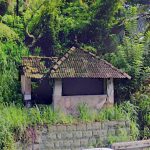 Kandekumbura Ambalama Kandekumbura Ambalama | yes | Central | Kandy | This ambalama has been built on 1st March 1938 by a person called Galpatigedhara Kiripuncha. Even though this structure lies just beside a main road, its roof and the structure is crumbling and weeds cover the surrounding area. |
| 085 | 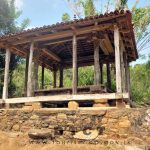 Kandewela Ambalama Kandewela Ambalama | approx. location | Central | Kandy | Four large pillars with carvings carry the main weight of the roof of this building supported by 12 wooden pillars on the outer square. The inner pillars carry carved designs. |
| 086 | 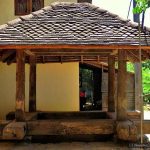 Karalliyadda Ambalama Karalliyadda Ambalama | yes | Central | Kandy | Ancient wayside rest made of wood belonging to the Kandyan era lying hidden inside a private property among cement buildings. |
| 087 |  Kathpela Ambalama Kathpela Ambalama | no | Central | Kandy | Kathpela Ambalama in Hathiyalwela village situated in the Grama Niladhari Division, Metideniya in the Divisional Secretary's Division, Medadumabara in Kandy District in Central Province was declared as an protected archaeological site on 30 Sep 2022. |
| 088 | 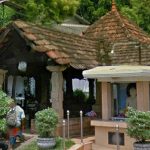 Kengalla Ambalama Kengalla Ambalama | yes | Central | Kandy | Built in 1907 by a Tamil planter from Tanjur, Tamil Nadu and member of Nayak dynasty who ruled the Kandyan Kingdom from 1739 to 1815, this 100-year-old ambalama has an interesting story combined with historical facts. |
| 089 | 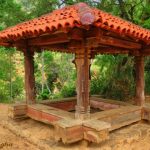 Kevulgama Ambalama Kevulgama Ambalama | yes | Central | Kandy | A tiny ambalama made of wood in Madamahanuwara area. The base of the structure is made of four large wooden beams raised from the ground. Four finely carved wooden pillars rising from the base holds the roof. |
| 090 |  Kohanga Ambalama Kohanga Ambalama | no | Central | Kandy | The ancient doss house (Kohanga Ambalama) located in the Grama Niladhari Division of Kohonga in Udunuwara Divisional Secretary’s Division in Kandy District, Central Province has been declared as an ancient monument on 16th August 2013 by an extraordinary gazette. |
| 091 | 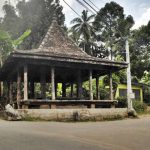 Konakalagala Ambalama Konakalagala Ambalama | yes | Central | Kandy | A tiny ambalama made of wood in Madamahanuwara area. The base of the structure is made of four large wooden beams raised from the ground. Four finely carved wooden pillars rising from the base holds the roof. |
| 092 |  Konhange Ambalama Konhange Ambalama | no | Central | Kandy | Konhange with traditional carvings was built by a villager in 1800 for those travelling from Kadugannawa to Kurukuththala. No further information available. (source : http://www.island.lk/2009/10/18/leisure1.html). Possibly this the Kurukuththala Ambalama? |
| 093 | 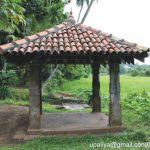 Kumburadeniya Ambalama Kumburadeniya Ambalama | no | Central | Kandy | Lies in Kamburadeniya village in Daulagala area. Travel 2 miles on the road left to Handessa Vidyalaya to reach the ambalama. Ambalama is built on 4 granite pillars. One of the wooden cross beams in the roof has 2469 BE and 1925 BC caved. Initially had a hay covered roof which was replaced with a tile roof in 1962. (from the publication : Ambalama ha Samajaya by Rohitha Dasanayake.) |
| 094 | 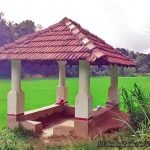 Kumburegama Welamada Ambalama Kumburegama Welamada Ambalama | yes | Central | Kandy | Ancient Ambalama in Galadedara area. Made of Brick and mortar, this is a well maintained small wayside rest. According to the carving on a wooden beam on the roof, this building has been built in 1912 as a remembrance to Kumburegama Loku Korale who died in 19896 by his son. |
| 095 |  Makuldeniya Ambalama Makuldeniya Ambalama | approx. location | Central | Kandy | The ambalama lie close to the Sub Post Office at Makuldeniya on Teldeniya - Rangala road. No further information available. (source : http://www.island.lk/2009/10/18/leisure1.html). |
| 096 | 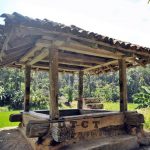 Malgamandeniya Ambalama Malgamandeniya Ambalama | approx. location | Central | Kandy | This wooden Ambalama at Malgamandeniya lies on the edge of a paddy field interior to the main road. The structure stands on 4 huge raised wooden beams. The roof is held by another four pillars connected to the floor beams. |
| 097 | 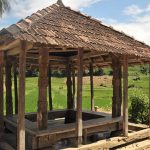 Marassana Ambalama Marassana Ambalama | approx. location | Central | Kandy | The Ambalama is believed to be built in the 18th or 19th centuries. The complete ambalama is made of wood from the “Mee” tree. The outer square is 6 feet 20 inches in length and the inner square 4 feet 17 inches in length. The wooden beams rest on 8 granite stumps to protect the wood from rotting. |
| 098 |  Megoda Kalugamuwa Ambalama Megoda Kalugamuwa Ambalama | yes | Central | Kandy | An ancient wayside rest on the route to to Gampola through Hindagala, about 13 km from Kandy city. The ambalama sits in the middle of a picturesque paddy field on the banks of Mahaweli River in the Kalugamuwa area. |
| 099 |  Muruthalawa Ambalama Muruthalawa Ambalama | no | Central | Kandy | The ancient doss house (Muruthalawa Ambalama) located in Muruthalawa village, situated in the Grama Niladhari Division of Sooriyagoda in Yatinuwara Divisional Secretary’s Division in Kandy District, Central Province has been declared as an ancient monument on 16th August 2013 by an extraordinary gazette. |
| 100 |  Nagolla Ambalama Nagolla Ambalama | no | Central | Kandy | Nagolla Ambalama and inscription situated in the Grama Niladhari Division, Nagolla in the Divisional Secretary's Division, Medadumbara in Kandy District in Central Province was declared an protected archaeological site on 30 Sep 2022. |
| 101 | 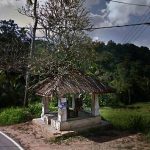 Narampanawa Ambalama Narampanawa Ambalama | yes | Central | Kandy | Narampanawa is a small town in Kandy just above Theldeniya on the banks of Hulu Ganga. The Narampanawa Ambalama lies underneath a temple tree on the edge of a picturesque paddy field along the road from Oruthota. |
| 102 | 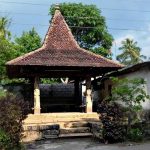 Naranwala Ambalama Naranwala Ambalama | yes | Central | Kandy | An exquisitely built building with typical Kandyan architecture lying 12 kilometers away from Kandy towards Gampola. |
| 103 | 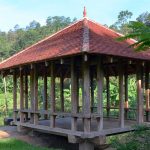 New Kamburadeniya Ambalama New Kamburadeniya Ambalama | yes | Central | Kandy | This Ambalama is a new structure built in 2021. However this is different from the more recent Ambalama's which were more utilitarian structures compared to works of art in the past. This is a replica of a traditional Sri Lankan timber Ambalama design popular during the Kandyan Era. It was designed by renowned architects to showcase the ancient architectural designs. |
| 104 | 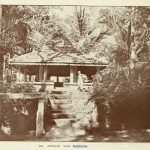 Old Teldeniya Ambalama Old Teldeniya Ambalama | yes | Central | Kandy | Teldeniya Ambalama had been built on stone pillars with handsomely carved timber beams in a picturesque location in Teldeniya. Since 1985 this area has been submerged under Victoria Reservoir. Stone pillars and beams of wood with carvings are said to be stored at Bambaragala Ministry as per one source and at Balagolla Kali Kovil. |
| 105 |  Palle Degala Ambalama Palle Degala Ambalama | yes | Central | Kandy | The roof of Palle Digala Ambalama is supported by four pillars made of large cylindrical bricks and mortar. The height of the original footing is not visible due to the elevation of the road here. Thick walls and short walls are used as seat rafts. |
| 106 | 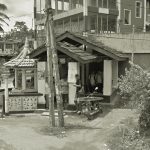 Pattiyawatta Ambalama Pattiyawatta Ambalama | yes | Central | Kandy | Protected as a designated archaeological monument in 2013. Made of Brick and mortar and none of the kandian architecture is present in the building.Possibly lost during renovations. |
| 107 | 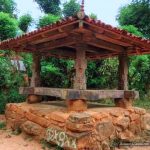 Pitawala Ambalama Pitawala Ambalama | approx. location | Central | Kandy | A small wooden ambalama built to the Kandyan tradition with exquisitely caved wooden pillars hidden in the ancient Kandy Mahiyangana route in Ududumbara, You need to travel 4-5 km in the mountains from the Kandy Mahiyangana Road to reach this ambalama. |
| 108 | 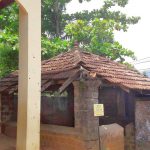 Poramadulla Ambalama Poramadulla Ambalama | yes | Central | Kandy | Hidden behind a large cement arch of the entrance to the Poramadulla Vidyakara Maha Vidyalaya you will find the dilapidated Poramadulla Ambalama neglected and forgotten. |
| 109 | 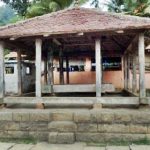 Pujapitiya Dolapihilla Ambalama Pujapitiya Dolapihilla Ambalama | yes | Central | Kandy | Pujapitiya is a small town 14 km away from Kandy towards Matale. Dolapihilla Ambalama lie close to the Pujapitiya town.Not much information is available on this Ambalama. |
| 110 | 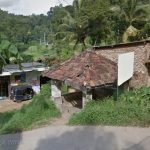 Pujapitiya Dombagammana Ambalama Pujapitiya Dombagammana Ambalama | yes | Central | Kandy | Pujapitiya is a small town 14 km away from Kandy towards Matale. The Ambalama is made of brick and mortar and is in a dilapidated state. There is no artistic value here other than being part of the ancient Ambalam network in the country. |
| 111 | 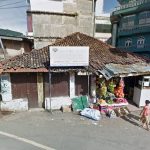 Rikillagaskada Ambalama Rikillagaskada Ambalama | yes | Central | Kandy | Unfortunately being at the center of the town, it has lost its ancient glory and turned in a another building to do a business. The ambalama is dilapidated and the roof has been patched haphazardly with tin roof sheets without any consideration to the antiquity of the building. |
| 112 |  Siridigana Ambalama Siridigana Ambalama | approx. area | Central | Kandy | Siridigana Ambalama situated in the Grama Niladhari Division, Siridigana in the Divisional Secretary's Division, Medadumbara in Kandy District in Central Province was declared an protected archaeological site on 30 Sep 2022. This ambalama lies in close proximity to Teldeniya-Rangala road. No further information available. (source : http://www.island.lk/2009/10/18/leisure1.html) |
| 113 | 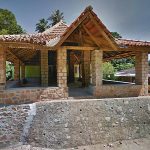 Teldeniya Putuhapuwa Ambalama Teldeniya Putuhapuwa Ambalama | yes | Central | Kandy | The ambalama was delipadated with the part of the roof and and walls caved in until beginning of 2017. The Archaeology department has now carried out a complete restoration of this ambalama while maintaining its ancient design features. |
| 114 | 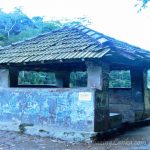 Udunuwara Wattappola Ambalama Udunuwara Wattappola Ambalama | approx. area | Central | Kandy | An ambalama built in 1918 by a pious donor. This is still annually repaired by the relations of the donor. The Ambalama lies in the village of Wattappola which was on the ancient Kandy - Gampola route. Originally made by stone but during repairs a cement layer has been applied on the stone and painted over. |
| 115 | 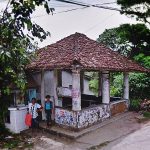 Uduwawala Ambalama - Katugastota Uduwawala Ambalama - Katugastota | yes | Central | Kandy | A small ancient Ambalama (wayside rest) lies on the Uduwawala Junction on the Katuagastota – Medawala road partly functioning as a Bus Stop. |
| 116 | 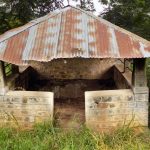 Wahugapitiya Purana Gal Ambalama Wahugapitiya Purana Gal Ambalama | yes | Central | Kandy | An Ambalama built in 1929 using stone blocks and pillars. Two exquisitely carved Load Ganesh and another deity can be found on the two front pillars. |
| 117 |  Wathupola Ambalama Wathupola Ambalama | yes | Central | Kandy | The ancient Wathupola Ambalama (wayside rest) is situated in middle of a paddy field in the Wathupola Grama Niladhari Division, Udunuwara Divisional Secretary’s Division, Kandy District in the Central Province. |
| 118 | 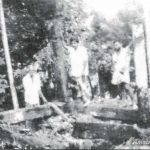 Wathurakumbura Ambalapitiya Ambalama Wathurakumbura Ambalapitiya Ambalama | approx. location | Central | Kandy | A small wooden ambalama now in ruins. Only the wooden beams used as the base was intact and the pillars and the roof has collapsed on to the base. However its not known even if colapsed structure remains today or altogether destroyed. |
| 119 | 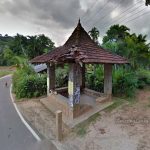 Wegiriya Ambalama Wegiriya Ambalama | yes | Central | Kandy | This typical Kandyan style Ambalama is built using 4 huge granite pillars and the roof is built from Jack wood. four sides of the walls are made to used as seats and is built at three heights for different class of people common in during that time. This ambalama has been built in 1925. |
| 120 | 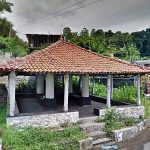 Yakgahapitiya Sirimalwatta Ambalama Yakgahapitiya Sirimalwatta Ambalama | yes | Central | Kandy | Lies on the route to the popular Degaldoruwa Rajamaha Viharaya about 5km from Kandy. A 1995 article describes this ambalama as being built on a rough stone base though now the floor is made of cement. |
| 121 | 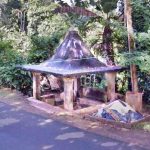 Yatawara Gal Ambalama Yatawara Gal Ambalama | yes | Central | Kandy | Yatawara Gal Ambalama is an ancient wayside shelter hidden and unknown in the Yatawara area in Kandy district. The ambalama is built on 4 granite pillars and during renovations, the roof has been made in concrete. |
| 122 | 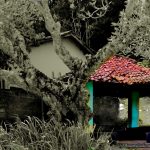 Yatiwawala Ambalama Yatiwawala Ambalama | yes | Central | Kandy | Ancient Ambalama in Galadedara area. Made of Brick and mortar, this is a well maintained small wayside rest. Although lacking artistic artifacts, this perfectly represents the accepted social class separation by building seating walls at 3 levels for different social classes. |
| 123 | 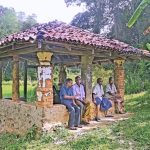 Alagalla Ambalama Alagalla Ambalama | no | Sabaragamuwa | Kegalle | A small ambalama in Aranayake, Madiliya in a paddy field. Was reported that this was in a dilapidated state in 2018. No further information available. |
| 124 | yes | Sabaragamuwa | Kegalle | This Ambalama is built with 4 pillars holding the roof and 2 wooden pillars at the entrance. The structure stands alone a land covered in tall grass and weed growing all over. | |
| 125 | 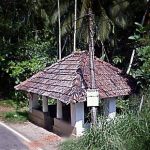 Algama Mahawaththa Ambalama Algama Mahawaththa Ambalama | yes | Sabaragamuwa | Kegalle | Lies on the Algama – Horagasmankada road. Made of brick and mortar, the ambalama is rectangular in shape and built on seven square pillars and 2 cylindrical pillars which acts at the entrance pillars. |
| 126 |  Aluthnuwara Giruwa Ambalama Aluthnuwara Giruwa Ambalama | yes | Sabaragamuwa | Kegalle | A historic wayside rest close to the Aluthnuwara Dedimunda Devalaya in Kegalle District.This site has been built by Queen Sunethradevi, chief consort of King Parakramabahu II (A.D 1236-1276) and mother of King Bhuvanekabahu I. |
| 127 | 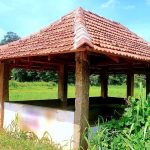 Ambulugala Ambalama Ambulugala Ambalama | yes | Sabaragamuwa | Kegalle | The Amblama lying close to the Ambulugala Viharaya could be old as the temple. Seven pillars hold roof of the structure. Out of which five are stone pillars and other two concrete. In 2019, this ambalama was completely disassembled and the repaired. Parts of stone pillars which had damages has been removed and completed in concrete. |
| 128 | 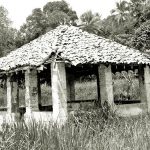 Godigamuwa Ambalama Godigamuwa Ambalama | yes | Sabaragamuwa | Kegalle | A dilapidated ambalama made of granite blocks now lies deserted at the center of a paddy field. |
| 129 | 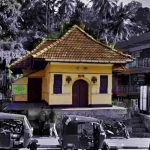 Kegalle Jubilee Ambalama Kegalle Jubilee Ambalama | yes | Sabaragamuwa | Kegalle | A large building size of a small house lying in the center of the Kagalle City. It has been built in 1887 in parallel to the visit by Queen Victoria of England to then Ceylon. |
| 130 | 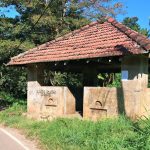 Kiuldeniya Ambalama Kiuldeniya Ambalama | yes | Sabaragamuwa | Kegalle | Kiuldeniya Ambalama is a square building made of brick and mortar. This has been built in 1930 as per the engraving on the front wall. The roof is held by four brick pillars and a half height wall is built around the structure. The seating bench built with cement is found only on the rear wall of the ambalama. |
| 131 | 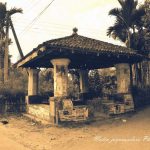 Makadawara Ambalama Makadawara Ambalama | yes | Sabaragamuwa | Kegalle | Lying just 3.5 kilometers away from Colombo Kandy road in Mawanella, this 150 year old ambalama still haven't lost its original charm. A 20x20 feet Ambalama made of Brick. This ambalama has been refereed to as Udamakadawara Ambalama. |
| 132 | 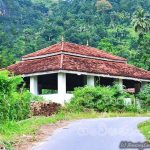 Makehelwala Ambalama Makehelwala Ambalama | yes | Sabaragamuwa | Kegalle | This is a large the size of a brick and mortar. The roof is made of two layers. The pillars around the ambalama and the place where the two layers join support the large roof. The roof is tiled with flat clay tiles popular in the Kandyan period. |
| 133 | 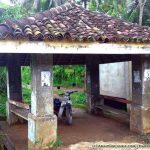 Makura Ambalama Makura Ambalama | approx. location | Sabaragamuwa | Kegalle | This is a unique from all the ambalam in the country since this is built on a granite slab laid across a water canal. The ambalama is located between Hettimulla and Deewala in Kegalle District |
| 134 | 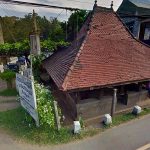 Mangalagama Ambalama Mangalagama Ambalama | yes | Sabaragamuwa | Kegalle | Is situated on the Colombo – Kandy road 85 km away from Colombo. The Ambalama you see today was re-built in 1970 by the Department of Archaeology. By that time only one wooden pillar with the cap and 8 granite pillars had been remaining of the building. The new building had been reconstructed with additional 8 concrete pillars shaped similar to the ancient granite pillars and wooden pillars carved based on the original remaining pillar. |
| 135 | 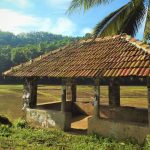 Maspotha Ambalama Maspotha Ambalama | yes | North Western | Kegalle | Maspotha Ambalama is located at a distance of 4.5 km from Alawwa town and 5.7 km from Nelumdeniya on the Beligala road. Located in the edge of a beautiful paddy field, this ambalama is made of kabok stone and plaster. There is also a well nearby for Ambalama users. |
| 136 | 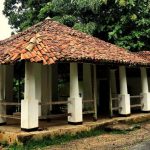 Mawanella Nepalana Ambalama Mawanella Nepalana Ambalama | yes | Sabaragamuwa | Kegalle | A brick and mortar way side rest in the Nepalana area in Kegalle District. The ambalama lies along the Mawanella Thalagolla Road adjoining a picturesque paddy field. The history of this Ambalama is not known. |
| 137 | 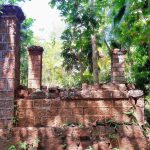 Molligoda Ambalama Molligoda Ambalama | yes | Sabaragamuwa | Kegalle | A stone Ambalama built close to a ancient Bodhi tree hidden deep inside Mawanella. Built using stone blocks, roof and one pillar is missing in this structure. Pilgrims possibly used the road through Molligoda to reach Aluthnuwara Devalaya and came to make offering to this Bodhi tree. |
| 138 | 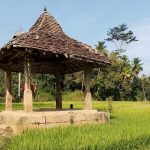 Molligoda Pinkumbura Ambalama Molligoda Pinkumbura Ambalama | yes | Sabaragamuwa | Kegalle | A stone Ambalama built on the edge of a paddy field by a individual donor with typical Kandyan architecture. Roof is dilapidated without maintenance. Other than this, this is still a grand structure. |
| 139 |  Nilwakka Ambalama Nilwakka Ambalama | no | Sabaragamuwa | Kegalle | lies about 3 kms from Kegalle on the Nilwakka Road which starts near the Kegalle Police station. |
| 140 | 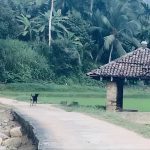 Parambe Ambalama Parambe Ambalama | yes | Sabaragamuwa | Kegalle | Nestled within the picturesque paddy fields of Parambe, a quaint ambalama stands as a charming refuge in Kegalle District. This delightful structure, adorned with simplicity, boasts a square design with short walls. Providing convenient seating, the ledges along the walls offer respite for weary travellers. |
| 141 | 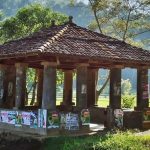 Rukula Ambalama Rukula Ambalama | approx. area | Sabaragamuwa | Kegalle | This ambalama is said to belonging to 13th century, built for travelers to the Devalaya.The Rukula Ambalama is built with brick and motar. 12 large columns carry the weight of the roof. The roof is tiled with semi cylindrical clay tiles (sinhala ulu) |
| 142 |  Ruwanwella Ambalama Ruwanwella Ambalama | yes | Sabaragamuwa | Kegalle | The ambalama lies in the center of the crowded, traffic – congested Ruwanwella town close to the ancient fort. This is said to be the largest ambalama found in the county. Today it is used as a ayurvedic medicine sales outlet for the local government. |
| 143 | 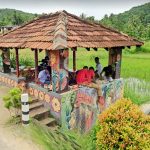 Tholangamuwa Ambalama Tholangamuwa Ambalama | yes | Sabaragamuwa | Kegalle | Tholangamuwa Ambalama is a brick and mortar rectangular structure with 4 brick pillars holding the roof and 2 wooden pillars at the entrance. A short wall is built around the ambalama and the top half is exposed. The roof is tiled with clay calicut tiles (Rata Ulu). The ambalama is built at the road elevation. |
| 144 | 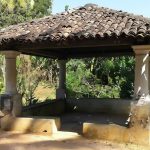 Udumahana Ambalama - Mawanella Udumahana Ambalama - Mawanella | yes | Sabaragamuwa | Kegalle | A small ambalama made out of brick and mortar. The building is square in its plan and four large pillars hold the roof of the building. |
| 145 | 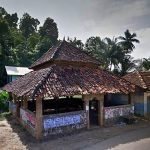 Wakirigala Ambalama Wakirigala Ambalama | yes | Sabaragamuwa | Kegalle | A fairly large ambalama built with 10 granite pillars on the outer square and 4 granite pillars of 20 feet on the inner square. The Northern Entrance of the ambalama is made out of a large granite door frame which is believed to be part of the ancient Wakirigala temple. |
| 146 | 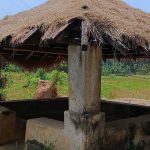 Walalgoda Ambalama Walalgoda Ambalama | yes | Sabaragamuwa | Kegalle | Walalgoda Ambalama is located in Rambukkana 4.5 km away from the town surrounded by lush paddyfields overlooking mountains. This is a simple square structure built of brick and mortar. The four half walls on the four sides are thick, suitable to seat on the wall. There is one opening to enter the Ambalama. |
| 147 | 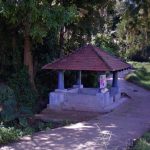 Waththewa Ambalama Waththewa Ambalama | yes | Sabaragamuwa | Kegalle | A small ambalama built to the Kandyan tradition in front of a picturesque paddy field in Waththewa. Current structure is newly built with cement. Where it was built to replace and older Ambalama is unknown. |
| 148 |  Yatimahana Banagegoda Ancient Ambalama Yatimahana Banagegoda Ancient Ambalama | no | Sabaragamuwa | Kegalle | A historic wayside rest in the Mawanella DS division declared as an protected archaeological building by the gazette issued on 6th June 2008. |
| 149 | 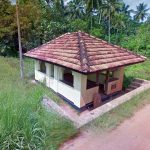 Ihala Kotuwella Ambalama Ihala Kotuwella Ambalama | yes | North Western | Kurunegala | Ihala Kotuwella Ambalama in Pannala is a simple ambalama lying near a large paddy field by a water steam adjoining the Kotuwella road. Its a brick and mortar square building with half walls. The half walls would have been used as benches as there is no seating inside the Ambalama. |
| 150 | 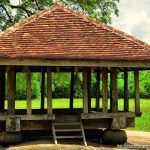 Karagahagedara Ambalama Karagahagedara Ambalama | yes | North Western | Kurunegala | Is celebrated for its scenic setting among the local paddy fields. This is built on 4 boulders on a rocky plain. |
| 151 | 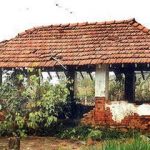 Kelimune Ambalama Kelimune Ambalama | yes | North Western | Kurunegala | A delapidated ambalama on the Kurunegala - Wariyapola road. |
| 152 | 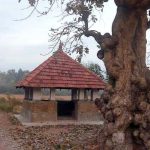 Kumarapeliya Ambalama Kumarapeliya Ambalama | yes | North Western | Kurunegala | The Ambalama at Kumarapeliya is built of stone and cemented with the mix of clay. The history of this Ambalama is not known but this lies underneath a massive Bakmee Tree which is 20-25 feet in Hight. The tree has unusually large knots all over its trunk. It is said such knots develop only after 450-500 years of a Bakmee tree. |
| 153 |  Muruthawa Ambalama Muruthawa Ambalama | yes | North Western | Kurunegala | Muruthawa Ambalama stands out due to its distinctive ground plan. It is constructed in a hexagonal shape with short walls. Twelve cylindrical pillars support the roof, with two pillars positioned at each corner of the hexagon. |
| 154 | 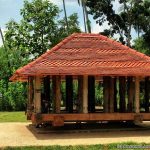 Panavitiya Ambalama Panavitiya Ambalama | yes | North Western | Kurunegala | One of the most popular ambalama due to its exquisite wood carvings of the Kandyan Era. |
| 155 | 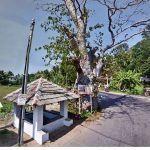 Paramaulla Ambalama Paramaulla Ambalama | yes | North Western | Kurunegala | Ambalama lies beside an old Geta Kumbuk tree. According to the the Central Environmental Authority this tree has been lying on a bund of the irrigation reservoir built by king Vijayabahu III (1232-1236) of Dambadeniya kingdom. |
| 156 |  Pothuhera Arambepola Ambalama Pothuhera Arambepola Ambalama | yes | North Western | Kurunegala | A square brick and mortar structure situated in the Handugala Grama Sewaka division within the Polgahawela District Secretariat of the Kurunegala District. The walls of the Ambalama are half-height and feature a built-in ledge around the perimeter for seating. The roof is supported by four wooden beams, which rest on four brick and mortar pillars. |
| 157 | 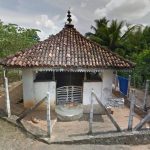 Ranagala Ambalama Ranagala Ambalama | yes | North Western | Kurunegala | Ranagala (Renagala) has been a popular ancient cross road connecting Siriwardhanapura, Anuradhapura, Kurunegala and Kandy. One proof of the importance of this is the ancient Ambalama at Ranagala. This Ambalama lies on the edge of a large paddy field in Ranagala and about 500 meters before the popular Rangala Rajamaha Viharaya. |
| 158 | 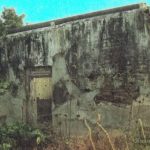 Moonrampiddi Madama (Ambalama) Moonrampiddi Madama (Ambalama) | yes | Northern | Mannar | One of the few ambalams built during the British era in the Northern province which are built with Hindu cultural influence. The roof has been destroyed and only the walls remain in this Ambalama which lies 38 km off Mannar on the Jaffna Road |
| 159 | 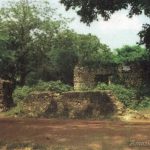 Vidataltivu Madam (Ambalama) Vidataltivu Madam (Ambalama) | approx. location | Northern | Mannar | One of the few ambalams built during the British era in the Northern province which are built with Hindu cultural influence. The roof has been destroyed and only the walls remain in this Ambalama which lies 19 km off Mannar on the Jaffna Road |
| 160 | 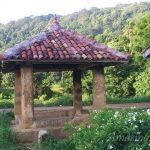 Ambokka Ambalama Ambokka Ambalama | approx. location | Central | Matale | A small stone ambalama in good conditions hidden in the hills off Matale. The ambalama is said to be about 300 years old. It is built on 4 square stone pillars and the pillars are joint by 4 other horizontal stone pillars which act as seats for the traveler. |
| 161 | 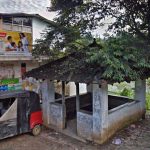 Arambepola Ambalama Arambepola Ambalama | yes | Central | Matale | Arambepola Ambalama is a small Ambalama lying between Akurana and Alawathugoda on the main road to Matale from Kandy.Made out of clay/cement the the roof is covered with a tin roof today. |
| 162 | 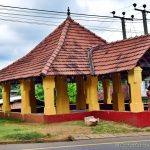 Deevilla Ambalama Deevilla Ambalama | yes | Central | Matale | Ambalama stands on 18 massive cement pillars and is a comparatively large ambalama located at the Deevilla Junction. |
| 163 | 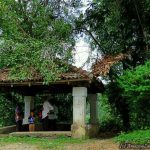 Godapola Ambalama Godapola Ambalama | yes | Central | Matale | This Ambalama stands on a square platform with half walls surrounding the building near a paddy field underneath a patch of large trees. Four octagonal pillars hold the roof of the Ambalama. These pillars are decorated with simple pillar heads (Pekada) with floral designs. |
| 164 | 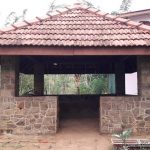 Katuaththamada Ambalama Katuaththamada Ambalama | yes | Central | Matale | A small ambalama made out of rock and mortar. The building is square in its plan and four large pillars hold the roof made of Calicut clay tiles (Rata Ulu). The pillars are plain and carries no artwork. |
| 165 | 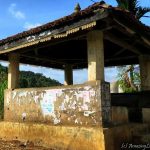 Makuletenna Ambalama Makuletenna Ambalama | yes | Central | Matale | The Ambalama at Makulethenna lies just 100 meters away from the Makulethenna Rajamaha Viharaya in Matale. To reach this building from Matale, take the Harrison Jones Road and travel 3.5 km along this narrow road. The ambalama lies near the road surrounded by lush paddy fields. |
| 166 | 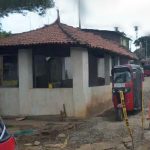 Naula Ambalama Naula Ambalama | yes | Central | Matale | An ambalama going back to the time of king Devanampiyathissa. However this has been re constructed many times, the last time around 2015. Now only a brick and mortar structure losing all its original glory. |
| 167 | 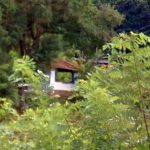 Nugapitiya Ambalama Nugapitiya Ambalama | yes | Central | Matale | Nugapitya Ambalama lies next to a picturesque paddy field in the village of Nugapitiya lying between Kandy and Matale. It is a square brick and mortar building with its roof resting on four pillars. A short wall travels around the Ambalama. |
| 168 | 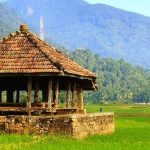 Padiwita Ambalama Padiwita Ambalama | yes | Central | Matale | Lies in middle of a paddy field in the Matale District. History of this Ambalama is not known but it can be presumed that this has been built during the Kandyan kingdom, before the British invasion. |
| 169 | 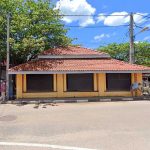 Kamburupitiya Ambalama Kamburupitiya Ambalama | yes | Southern | Matara | Kamburupitiya Ambalama is one such Ambalama built in 1909. This is a comparatively large Ambalama built with Brick and mortar, standing in the centre of the Kamburupitya town. The Ambalama is fully covered. The front is built with a short wall and square and cylindrical pillars the empty space is covered with latticework structures for ventilation. The entrance is on the side. |
| 170 | 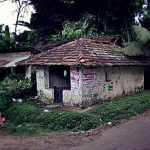 Lenabatuwa Ambalama Lenabatuwa Ambalama | yes | Southern | Matara | A brick and mortar wayside rest in front of the Lenabatuwa Wewa also known as Wilpita Wewa. The Ambalama is rectangular in shape and three sides other than the front is fully covered. |
| 171 | 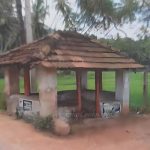 Nelumwewa Ambalama Nelumwewa Ambalama | yes | Southern | Matara | The Nelumwewa Ambalama, which is now destroyed, is situated along the Ratmale-Dikwella road. It is positioned 900 meters away from the Ratmale junction and approximately 4.5 kilometers from the town of Dikwella. Around 250 years in the past, local villagers collaborated to construct this Ambalama in proximity to a Mara tree. |
| 172 | 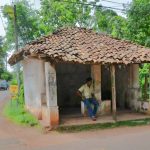 Parawahera Ambalama Parawahera Ambalama | yes | Southern | Matara | A brick and motar plain wayside rest on the lying 9 kms from Matara on the Ratmale Road built during the 19th century. |
| 173 | 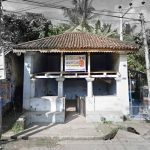 Rathmale Ambalama Rathmale Ambalama | yes | Southern | Matara | The unique Rathmale Ambalama is the only two storied ambalama found in the country. The upper floor of the ambalama is said to be used by the priests and the lower floor by the laymen. |
| 174 |  Uduwaka Ambalama Uduwaka Ambalama | yes | Southern | Matara | Uduwaka Ambalama is a somewhat recent resting place in Matara District lying 8km off Weligama (2.7 km off Thelijjawila) on the Weligama Thelijawila road. The Ambalama lies by the main road, next to a lush paddy field. |
| 175 | 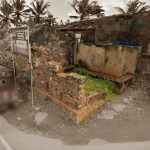 Wellamadama Ganadevi Ambalama Wellamadama Ganadevi Ambalama | yes | Southern | Matara | One of the most ancient ambalamas with at least a 500 years old history. Only ruins remain today due to neglect. |
| 176 | 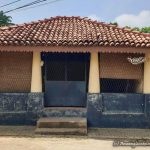 Weragampita Ambalama Weragampita Ambalama | yes | Southern | Matara | An ambalama built during 18th or 19th century centered around the ancient Navinna ferry port across Nilwala Ganga. |
| 177 | 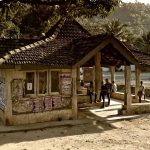 Hanguranketha Ambalama Hanguranketha Ambalama | yes | Central | Nuwara Eliya | Lie between the Pothgul Rajamaha Viharaya and the Hanguranketha Vishnu Devalaya. Believed to be built around 150 years ago. |
| 178 | 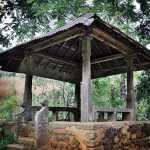 Kotagapitiya Ambalama Kotagapitiya Ambalama | approx. location | Central | Nuwara Eliya | A small Ambalama lying on the narrow road to Kotagapitiya which is believed to be built by the prince Dutugemunu. It is built on a square platform made of granite blocks. The roof is held by four finely cut granite pillars. |
| 179 | 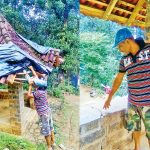 Kothmale Hadunuwewa Ambalama Kothmale Hadunuwewa Ambalama | yes | Central | Nuwara Eliya | One of the 5 ancient Ambalama in Kothmale area now in a dilapidated state. Made of granite blocks, this is a small square structure. |
| 180 | 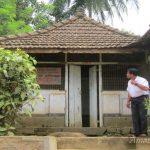 Madanwala Ambalama Madanwala Ambalama | yes | Central | Nuwara Eliya | An ambalama built in 1901 by a donor during the times when this was a trade route carrying goods on bullock carts. During these days, it has been popular among the cart drivers and sales men. Today this building is used as a pre-school and a self employment training center. |
| 181 | 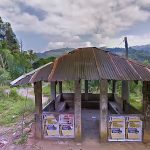 Morapaya Ambalama Morapaya Ambalama | yes | Central | Nuwara Eliya | Lies about 2 kms on the road to Mandaram Nuwara from Padiyapellela. Even through lying right next to the road, this Ambalama doesn’t seems to have been caught the eye of the authorities. |
| 182 | 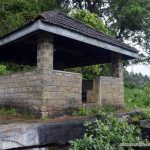 Ranamune Ambalama Ranamune Ambalama | yes | Central | Nuwara Eliya | Associated with the time prince Dutugemunu hid away from his father in Kothmale. Lies atop a paddy field close to a water sprout which is also believed to be a bathing place of the prince. |
| 183 |  Batadura Ambalama Batadura Ambalama | yes | Sabaragamuwa | Ratnapura | Unknown Ambalama located 7 km off Opanayake on the Galkanda road. No photos or description available. |
0-09 m (87) 10-19 m (77) 20-29 m (46) 30-39 m (50) 40-49 m (24) 50-99 m (49) Ambalama (161) Ancient Anicuts (33) Articles (0) Asanaghara (8) Ashtapala Bodhi (5) Attraction Articles (3) Attractions (226) Beaches (9) Biosphere Reserves (3) Botanical Gardens (5) Bridges (34) Cave Art (6) Caving (7) Churches (17) Cities (9) Destinations (16) Dethis Pala Bodhi (15) Devalaya (41) Events (2) Flora and Fauna (76) Forts (49) Heritage (1629) Heritage Articles (28) Historic Events (5) History (7) Hot Springs (9) Hydro Heritage (87) Irrigation Articles (4) Islands (15) Kovils (25) Kuludage (11) Lighthouses (27) Memorials (53) Mile Posts (6) Mosques (3) Museums (8) National Parks (22) over 100 m (20) Pabbatha Vihara (11) Personalities (7) Pillar/Slab Inscriptions (37) Pre Historic Burial Sites (19) Prehistory (38) Prehistory Articles (2) RAMSAR sites (6) Ravana (12) Reservoirs (48) Rock Inscriptions (9) Ruins in Wilpattu (5) Ruins in Yala (25) Santuaries (7) Sluice Gates (13) Stone Bridges (18) Strict Nature Reserves (3) Sumaithangi (3) Survey Towers (15) Tampita Vihara (240) Tourist Attractions (198) Travel (3) View Points (18) Walawwa (13) War Memorials (26) Waterfalls (375) Wildlife Articles (24) Yathuru Pokuna (4)
Abhayagiri Monastery (20) Ampara District (193) Anuradhapura District (212) Badulla District (118) Batticaloa District (22) Colombo District (79) Galle District (64) Gampaha District (60) Hambantota District (117) India (1) Jaffna District (72) Kalutara District (51) Kandy District (201) Kegalle District (158) Kilinochchi District (13) Kingdom of Anuradhapura (85) Kingdom of Kandy (14) Kingdom of Kotte (9) Kingdom of Polonnaruwa (55) King Kavan Tissa (1) King Mahasen (1) King Walagamba (3) Kurunegala District (172) Maha Vihara (14) Mannar District (47) Mannar Island (10) Matale District (86) Matara District (44) Mihintale (22) Monaragala District (101) Mullaitivu District (21) Negombo (5) Nuwara Eliya District (117) Polonnaruwa District (119) Puttalam District (37) Ratnapura District (161) Trincomalee District (49) Vavuniya District (31) waterfalls in Sinharaja (3) z Delft 1 (5) z Jaffna 1 (20) z Jaffna 2 (24) z Jaffna 3 (12)



 (14 votes, average: 3.79 out of 5)
(14 votes, average: 3.79 out of 5)